
Trees Around Las Vegas, Vegetation Around Las Vegas
 |
General: Russian Olive (Elaeagnus angustifolia) is a moderately tall, silvery, round-topped tree of wet areas. The leaves are elongate and silvery. Seeds are produced in bunches. Russian Olive is found along washes, rivers, and other wet areas in the Upper Sonoran (Mojave Desert Scrub and Pinyon-Juniper Woodland) life zone. Around Las Vegas, look for Russian Olive at Corn Creek, where is serves as a major source of food for birds, and Floyd Lamb Park. In natural areas around Las Vegas, keep an eye out for this species around wet areas. Land managers are actively working to eradicate Russian Olive, so hopefully you won't see it anywhere. Russian Olive it is on the Lake Mead NRA "Top 10 Invasive Species" list. Family: Oleaster (Elaeagnaceae). Other Names: Oleaster. |
 |
Plant Form: Upright, many-branched tree. Height: Usually 15-25 ft. Trunk: Several separate trunks. Leaves: Leaves elongate, silver gray. Flowers: Yellow; 4 petals. |
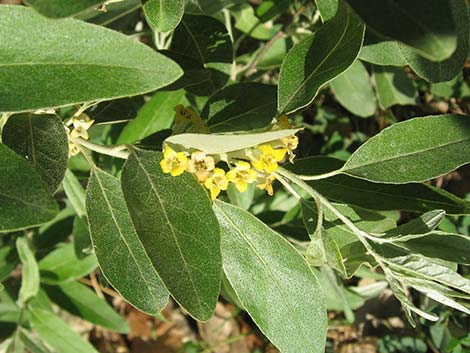 Flowers (and eventually fruit) occur in clusters |
Seeds: Seeds are produced in bunches that hang from small branchlets. Distribution: Introduced; occurs throughout the US. Habitat: Wet areas. Elevation: Comments: This species is considered a noxious, invasive weed in some places, but at least it provides food for birds. |
 Leaves and stem |
 Upper (top) and lower (bottom) of mature leaves |
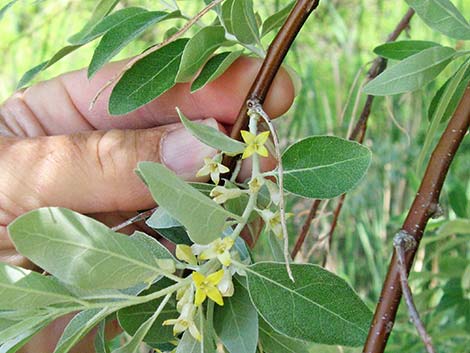 Flowers are yellow with four petals |
 Leaves |
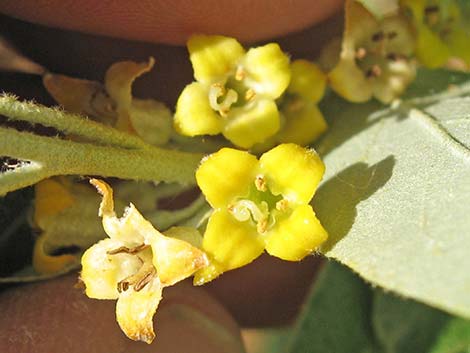 Flowers yellow with four petals |
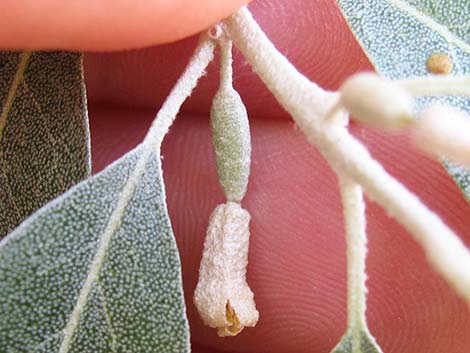 Spent flowers and developing fruit |
 Maturing clusters of fruit |
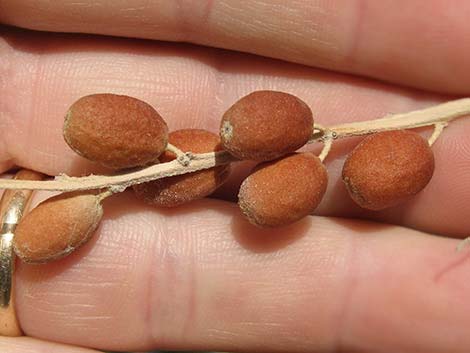 Fruits |
Note: All distances, elevations, and other facts are approximate. Names generally follow the USDA database.
![]() ; Last updated 220109
; Last updated 220109
| All Deciduous Trees | Plant Species Index | Glossary | Copyright, Conditions, Disclaimer | Home |